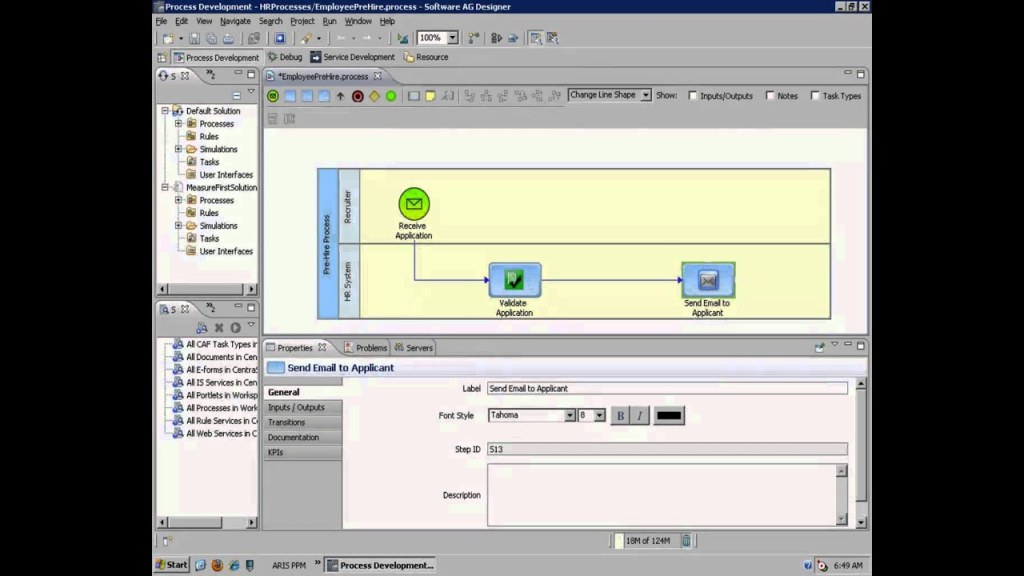Master WebMethods With The Ultimate Software AG Tutorial: Unlock Your Full Potential!
Software AG Tutorial: Mastering WebMethods for Efficient Performance
Introduction
Dear Readers,
2 Picture Gallery: Master WebMethods With The Ultimate Software AG Tutorial: Unlock Your Full Potential!


Welcome to our comprehensive guide on Software AG Tutorial: WebMethods. In this article, we will explore the ins and outs of WebMethods, a powerful integration platform that enables businesses to streamline their operations, enhance efficiency, and improve collaboration among various systems and applications.

Image Source: discourse-cdn.com
Whether you are a developer, IT professional, or business owner, understanding the fundamentals of WebMethods is crucial for harnessing its full potential and staying ahead in today’s digital landscape.
In this article, we will delve into the features, benefits, and implementation of WebMethods, providing you with a solid foundation to unlock the capabilities of this cutting-edge integration software.
So, without further ado, let’s dive into the world of WebMethods and discover how it can revolutionize your business operations.
What is WebMethods?

Image Source: ytimg.com
📚 WebMethods is an integration platform developed by Software AG, a leading provider of enterprise software solutions. It offers a robust set of tools and capabilities for integrating various systems, applications, and data sources within an organization.
WebMethods allows businesses to establish seamless connections between disparate systems, enabling smooth data flow and real-time information sharing. With its comprehensive suite of features, WebMethods empowers organizations to streamline their processes, enhance collaboration, and achieve operational efficiency.
Now that we have a basic understanding of what WebMethods is, let’s explore who can benefit from this versatile integration platform.
Who can Benefit from WebMethods?
📚 WebMethods is designed to cater to the needs of a wide range of professionals and organizations. Here are some key stakeholders who can benefit from WebMethods:
1. Business Owners and Stakeholders: WebMethods enables business owners to optimize their operations, reduce costs, and enhance customer experience by seamlessly integrating various systems and applications.
2. IT Professionals: WebMethods provides IT professionals with a comprehensive integration platform, empowering them to efficiently manage and orchestrate complex integration scenarios.
3. Developers: WebMethods offers a range of development tools and frameworks that simplify the integration process, allowing developers to build robust, scalable, and secure integrations.
4. System Administrators: With WebMethods, system administrators can monitor and manage integration flows, ensuring optimal performance and reliability.
5. Data Analysts: WebMethods provides data analysts with real-time access to integrated data, enabling them to analyze and derive meaningful insights for informed decision-making.
Now that we have identified the key beneficiaries of WebMethods, let’s explore when and where this powerful integration platform can be implemented.
When and Where to Implement WebMethods?
📚 WebMethods can be implemented in various scenarios and industries, including:
1. E-commerce: WebMethods facilitates seamless integration between online storefronts, inventory management systems, and customer relationship management (CRM) platforms, ensuring efficient order processing and inventory management.
2. Supply Chain Management: WebMethods streamlines supply chain processes by integrating suppliers, manufacturers, distributors, and retailers, enabling real-time visibility and collaboration.
3. Financial Services: WebMethods enables financial institutions to integrate their core banking systems, payment gateways, and customer portals, ensuring smooth transaction processing and personalized customer experiences.
4. Healthcare: With WebMethods, healthcare organizations can integrate electronic health record (EHR) systems, billing systems, and patient portals, enhancing patient care coordination and operational efficiency.
5. Manufacturing: WebMethods facilitates the integration of manufacturing execution systems (MES), enterprise resource planning (ERP) systems, and production planning tools, optimizing production processes and supply chain management.
Now that we understand when and where to implement WebMethods, let’s explore the reasons why businesses should embrace this integration platform.
Why Choose WebMethods?
📚 There are several compelling reasons why businesses should consider WebMethods:
1. Streamlined Integration: WebMethods offers a unified integration platform that simplifies the process of connecting and integrating various systems, applications, and data sources.
2. Scalability and Flexibility: WebMethods is designed to handle complex and evolving integration scenarios, ensuring scalability and adaptability to meet changing business needs.
3. Real-Time Data Integration: With WebMethods, organizations can achieve real-time data synchronization and integration, enabling timely decision-making and improved operational efficiency.
4. Enhanced Collaboration: WebMethods allows seamless collaboration among different teams, departments, and external stakeholders, fostering efficient communication and information sharing.
5. Reduced Costs and Complexity: By consolidating and centralizing integration processes, WebMethods eliminates the need for multiple point-to-point integrations, resulting in cost savings and reduced complexity.
Now that we have explored the advantages of WebMethods, let’s also consider some potential challenges that organizations may face when implementing this integration platform.
Challenges of WebMethods
📚 While WebMethods offers numerous benefits, it is essential to be aware of the potential challenges associated with its implementation:
1. Learning Curve: WebMethods is a robust integration platform that requires a learning curve for developers and administrators to master its features and functionalities.
2. Maintenance and Upgrades: As with any software, regular maintenance and upgrades are necessary to ensure optimal performance and security, which may require additional resources and efforts.
3. Legacy Systems Integration: Integrating legacy systems with WebMethods can be complex and time-consuming, requiring thorough understanding of the existing infrastructure and data structures.
4. Data Security: Integrating various systems through WebMethods involves sharing and exchanging sensitive data, necessitating robust security measures to safeguard against unauthorized access.
5. Scalability Challenges: As integration needs grow, organizations may face scalability challenges related to the capacity and performance of the underlying infrastructure.
Now, let’s address some frequently asked questions to provide further clarity on WebMethods and its implementation.
Frequently Asked Questions (FAQs)
1. What are the main components of WebMethods?
WebMethods consists of several key components, including Integration Server, Trading Networks, Broker, Designer, and Adapters, which collectively enable seamless integration and process orchestration.
2. Can WebMethods integrate with cloud-based systems?
Absolutely! WebMethods offers robust connectors and adapters to integrate cloud-based systems, such as Salesforce, Amazon Web Services (AWS), and Microsoft Azure.
3. Is WebMethods suitable for small businesses?
Yes, WebMethods caters to the needs of businesses of all sizes. Its scalability and flexibility make it an ideal integration platform for small businesses seeking to optimize their operations.
4. Can WebMethods handle real-time data synchronization?
Yes, WebMethods supports real-time data synchronization and integration, allowing organizations to achieve up-to-date information across various systems and applications.
5. Does WebMethods provide monitoring and analytics capabilities?
Certainly! WebMethods offers a comprehensive set of monitoring and analytics tools, empowering organizations to track integration performance and gain valuable insights.
Conclusion
In conclusion, WebMethods is a powerful integration platform offered by Software AG that enables organizations to seamlessly connect and integrate diverse systems, applications, and data sources.
By harnessing the capabilities of WebMethods, businesses can streamline their operations, enhance collaboration, and achieve unprecedented efficiency in today’s digital world.
We have explored the features, benefits, implementation scenarios, and potential challenges of WebMethods, providing you with a comprehensive overview of this versatile integration platform.
Now, it’s time for you to take action and explore how WebMethods can revolutionize your business operations. Embrace the power of integration, embrace WebMethods!
Final Remarks
📚 We hope this article has shed light on the world of WebMethods and its potential for transforming your business. However, it is important to note that successful implementation of WebMethods requires careful planning, expertise, and ongoing support.
Software AG and its partners offer comprehensive consulting and support services to ensure a smooth and successful integration journey. Reach out to our experts today to discover how WebMethods can accelerate your digital transformation and drive business growth.
This post topic: Software Tutorials

